Walter Jones heads to Canton a model of consistency, on and off the field
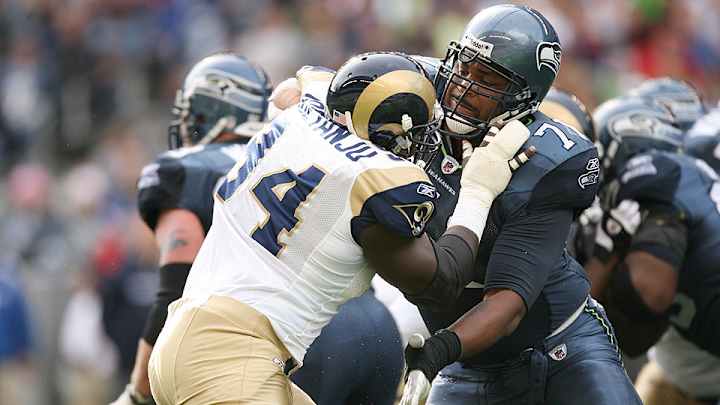
To explain what Walter Jones meant to the NFL could take hours. To explain what he meant to the Seattle Seahawks could take days. But to explain why he became a first ballot Hall of Famer requires only one play.
It happened in 2005, in the NFC Championship Game, with the Seahawks at home against the Carolina Panthers. Seattle called a stretch run, a staple of their record-setting offense. The handoff went to Shaun Alexander. He sprinted outside, to the left. Jones cleared the path in front of him.
They moved up field at roughly the same pace, which was remarkable, because Alexander was just running, while Jones was running and simultaneously pushing a defender 15 yards down field. This wasn’t any defender, either. This was Mike Rucker, a defensive end, a Pro Bowler, a man who weighed about 275 pounds. Jones carried Rucker toward the end zone the way that joggers carry iPods.
RANKINGS: QBs | WRs |TEs |Safeties|CBs|DTs|Pass rushers|LBs | OL
On Saturday, Jones will be inducted into the Pro Football Hall of Fame, his selection obvious, beholden only to common sense and time. He played his entire career, from 1997 to 2009, in Seattle, away from the bigger markets, known to anyone who knew anything about football but not necessarily to the casual sports fan.
That was the genius of Walter Jones. He stood 6-foot-5 and weighed 325 pounds and yet viewers who followed the football on television hardly noticed him. It could seem like a man that size didn’t exist. He was football’s Keyser Söze.
Teammates tabbed Jones with the nickname “Big Walt,” a moniker that seemed predestined. Jones was so big he weighed 11 pounds, 15 ounces at birth. He towered over other linemen, the largest behemoths on the field. Where most teammates lifted weights to train, Jones pushed SUVs up hills -- the better the contract, the bigger the car. When most stars inked new deals, they bought a mansion and installed a theater room, a man cave in the basement, maybe a pool. Jones bought a mansion and built a full-sized football field in the backyard. Just in case.
Those Seahawks teams collected NFC West division titles and lifted Seattle from perpetual mediocrity into the 2005 Super Bowl, which the Seahawks lost. Jones started every game he played in, 180 total. He could count the number of times referees whistled him for holding (nine) on two hands. He is said to have surrendered 23 career sacks, the same as Detroit’s entire offense in 2013, and the Lions finished with the second-fewest sacks allowed -- for one year, not twelve.
Jones blocked for runners who gained at least 1,000 yards in eight seasons and for quarterbacks who threw for at least 3,000 yards in seven of them. In 2005, Alexander captured the league MVP award for a then-record 28 total touchdowns. But Jones was the most valuable player on that team. Most linemen open up rush lanes. Jones opened up rush canyons.
GALLERY: Walter Jones' Workout
The Walter Jones Workout


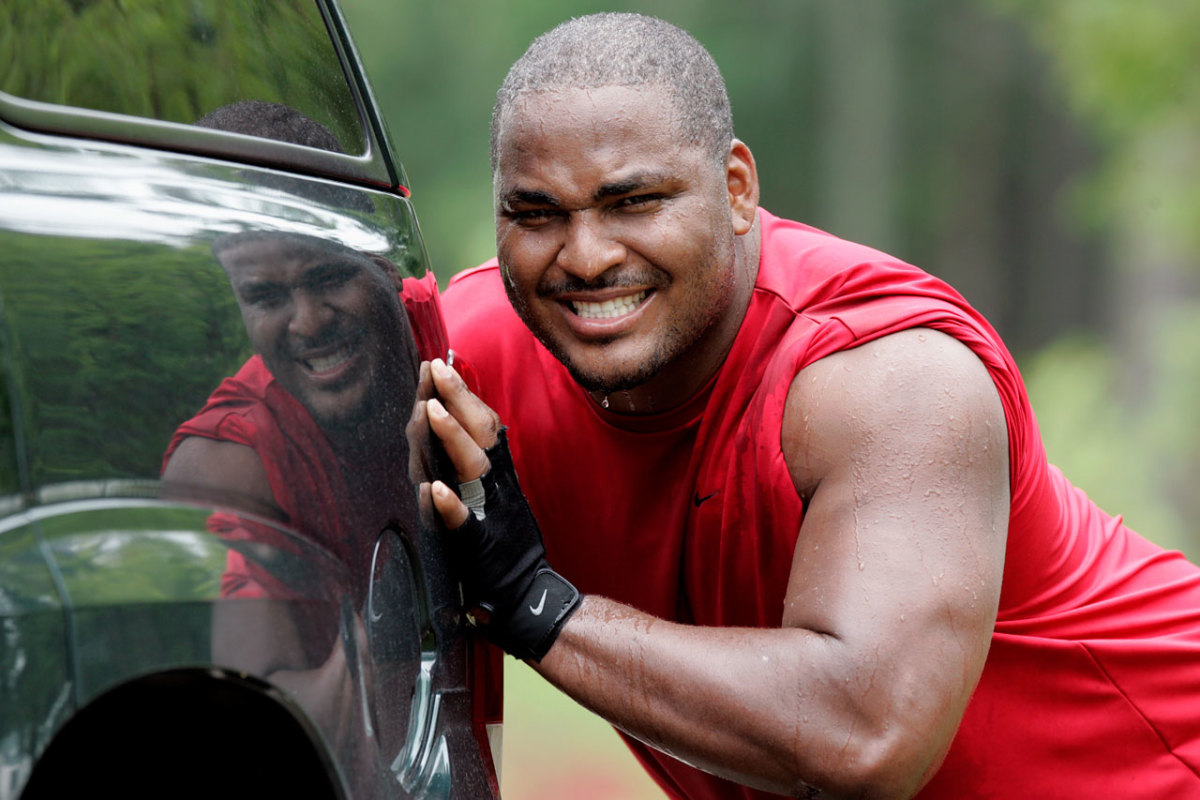
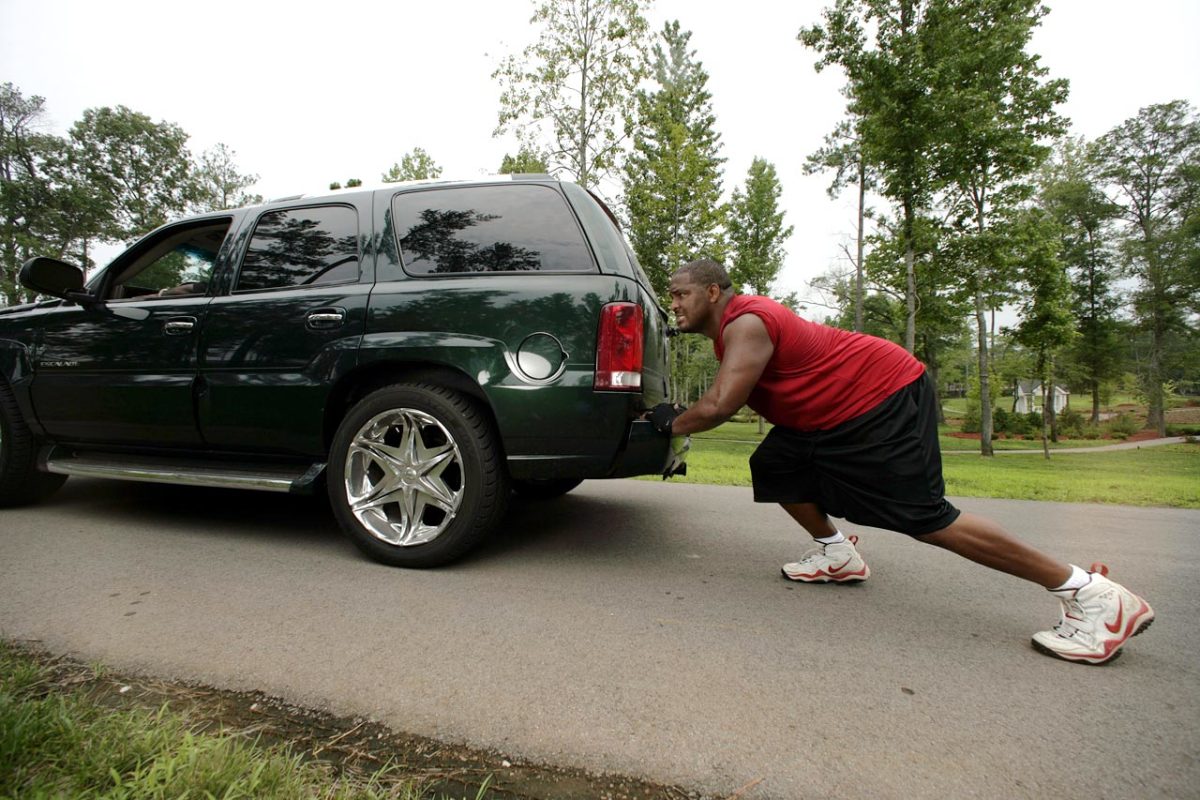
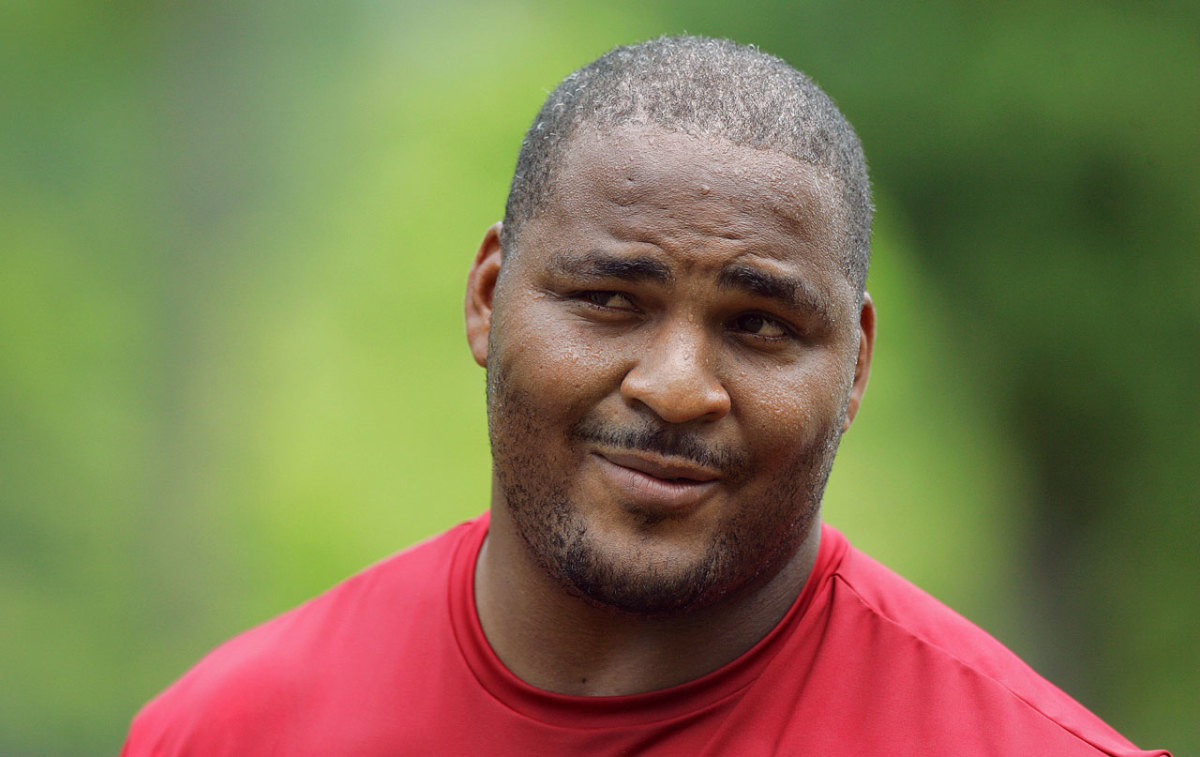
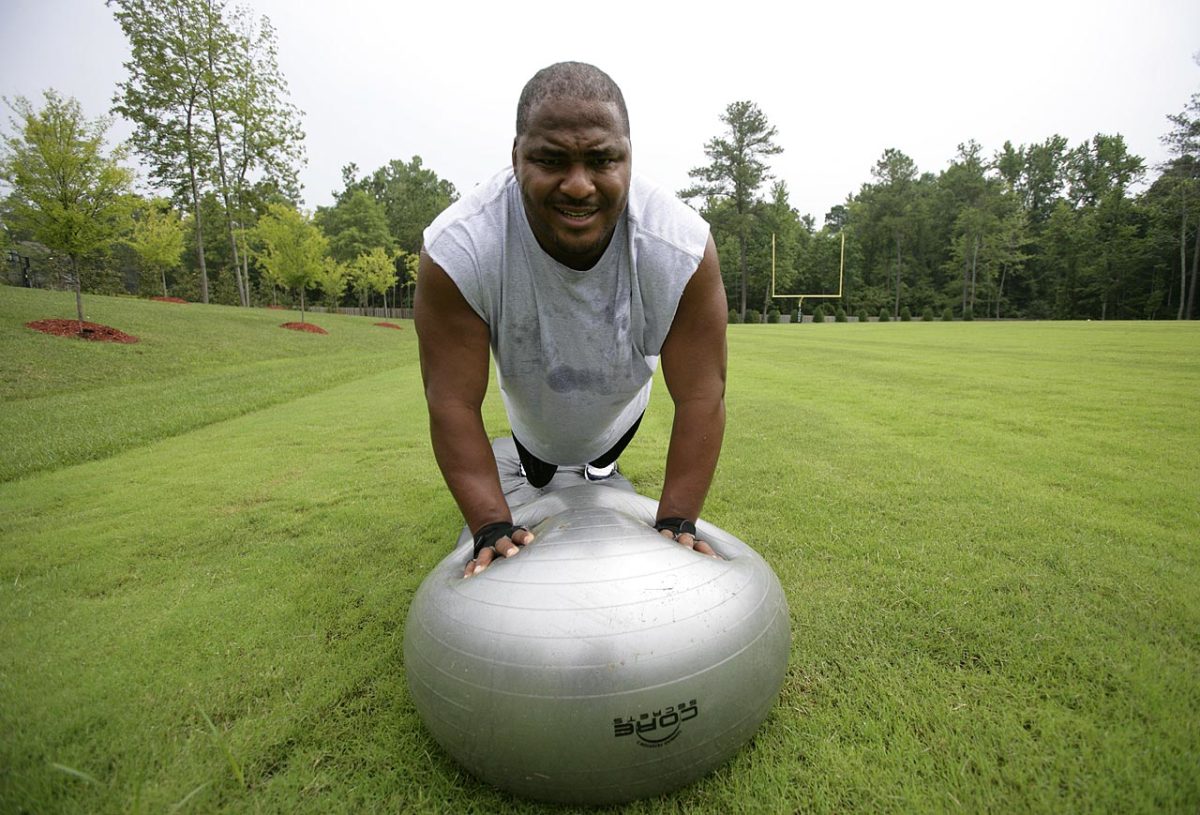


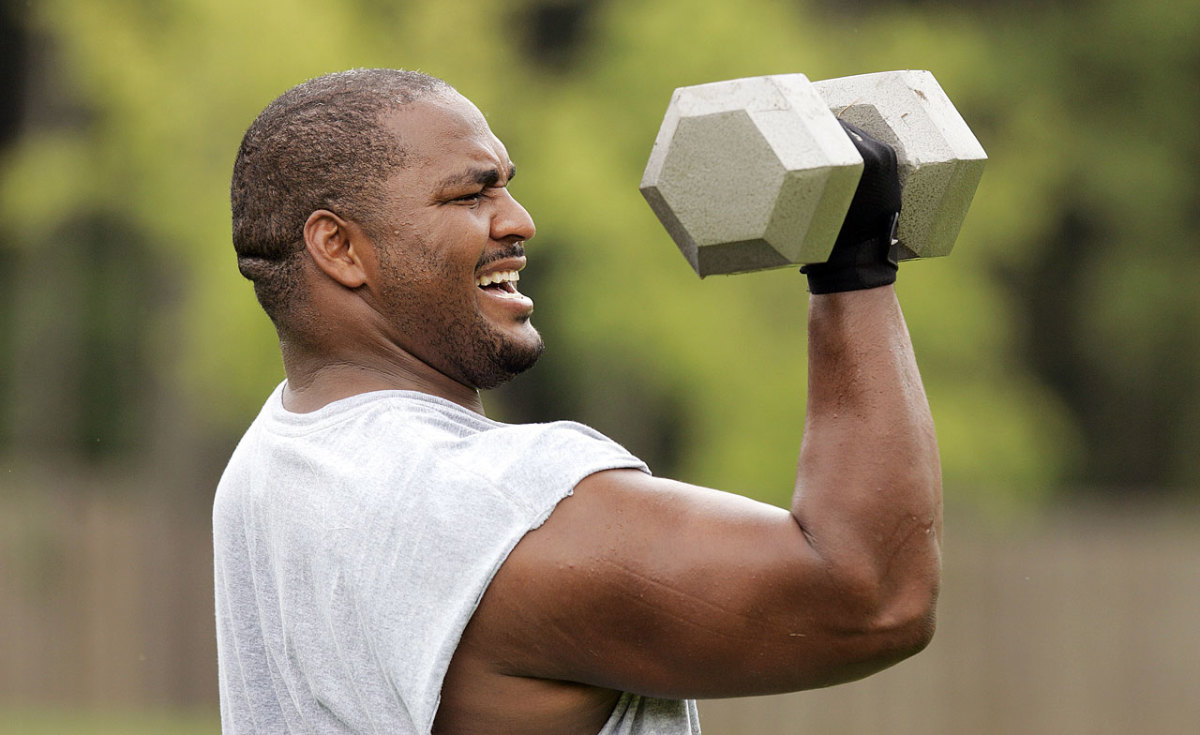
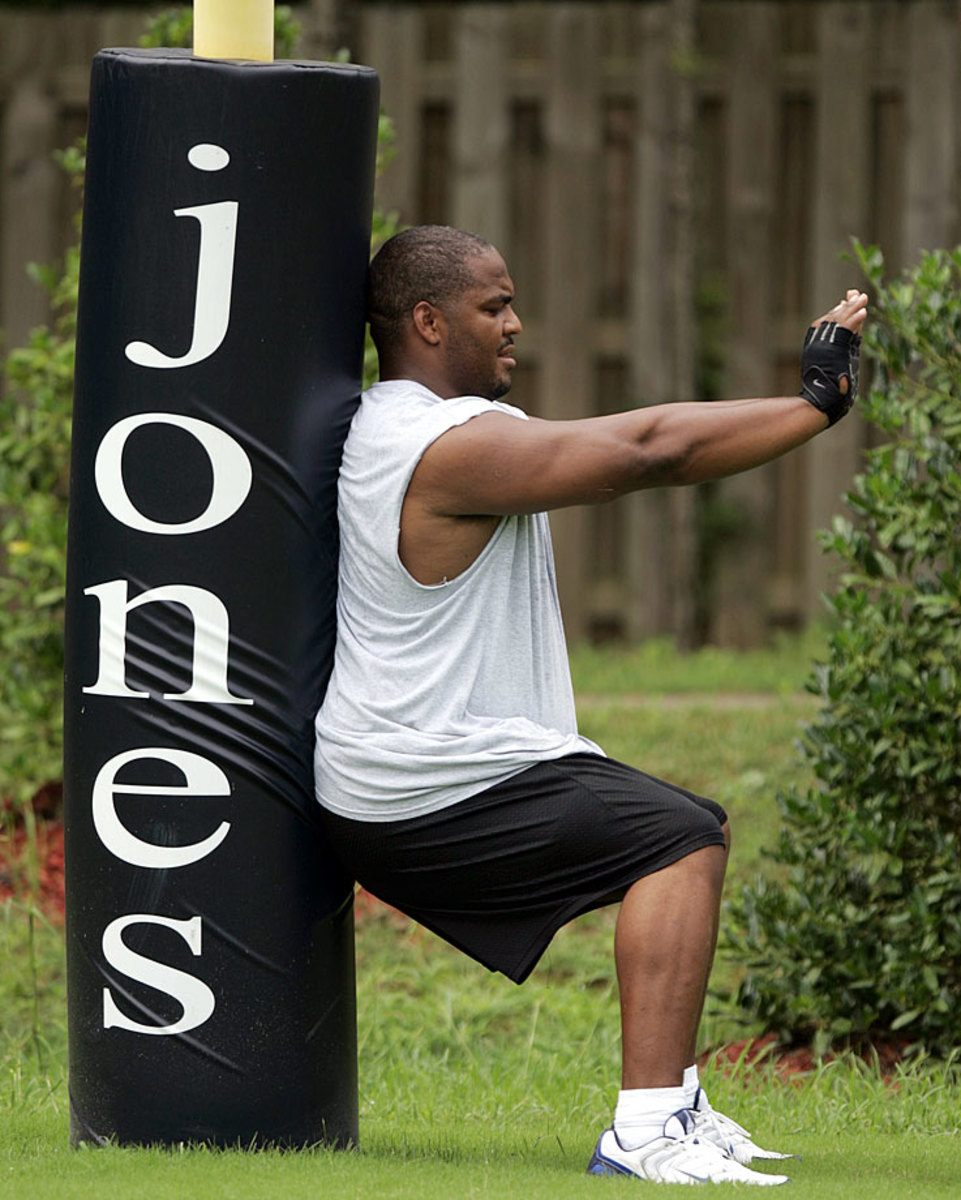
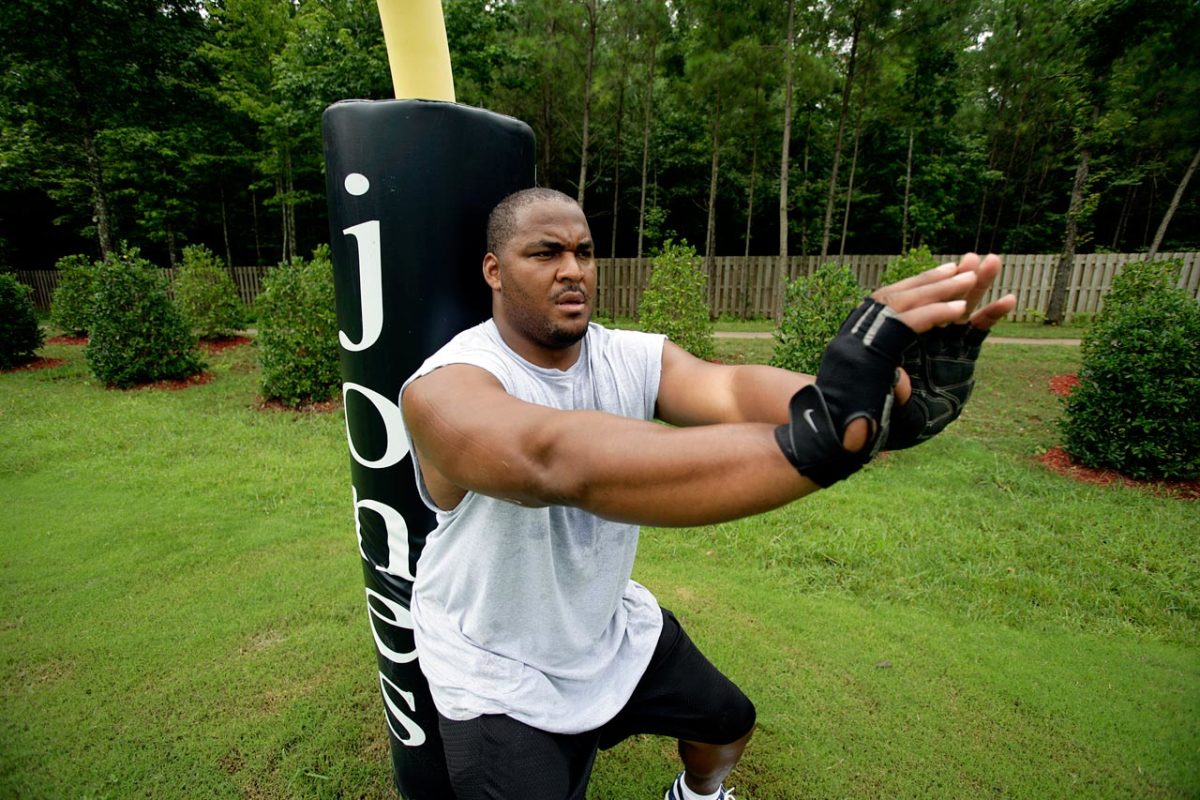
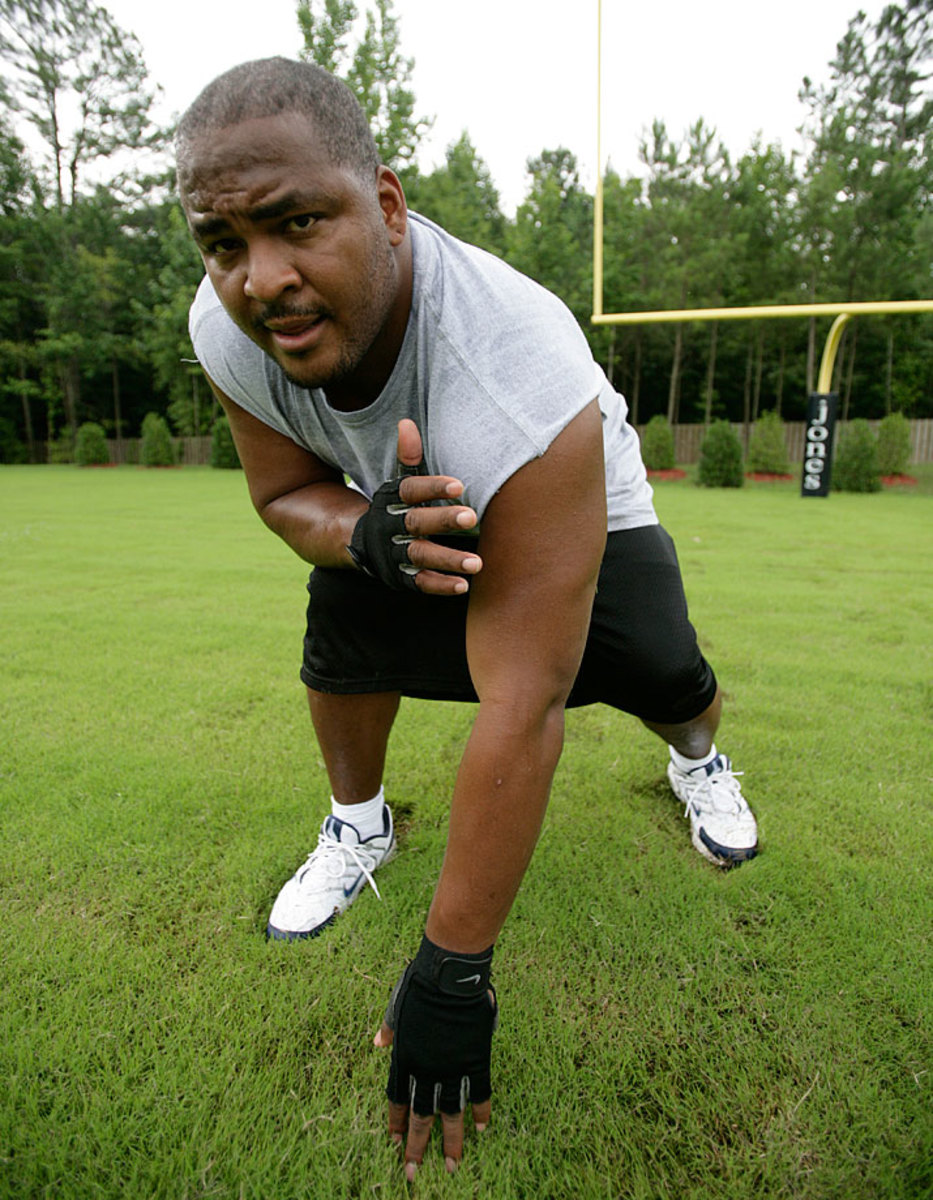
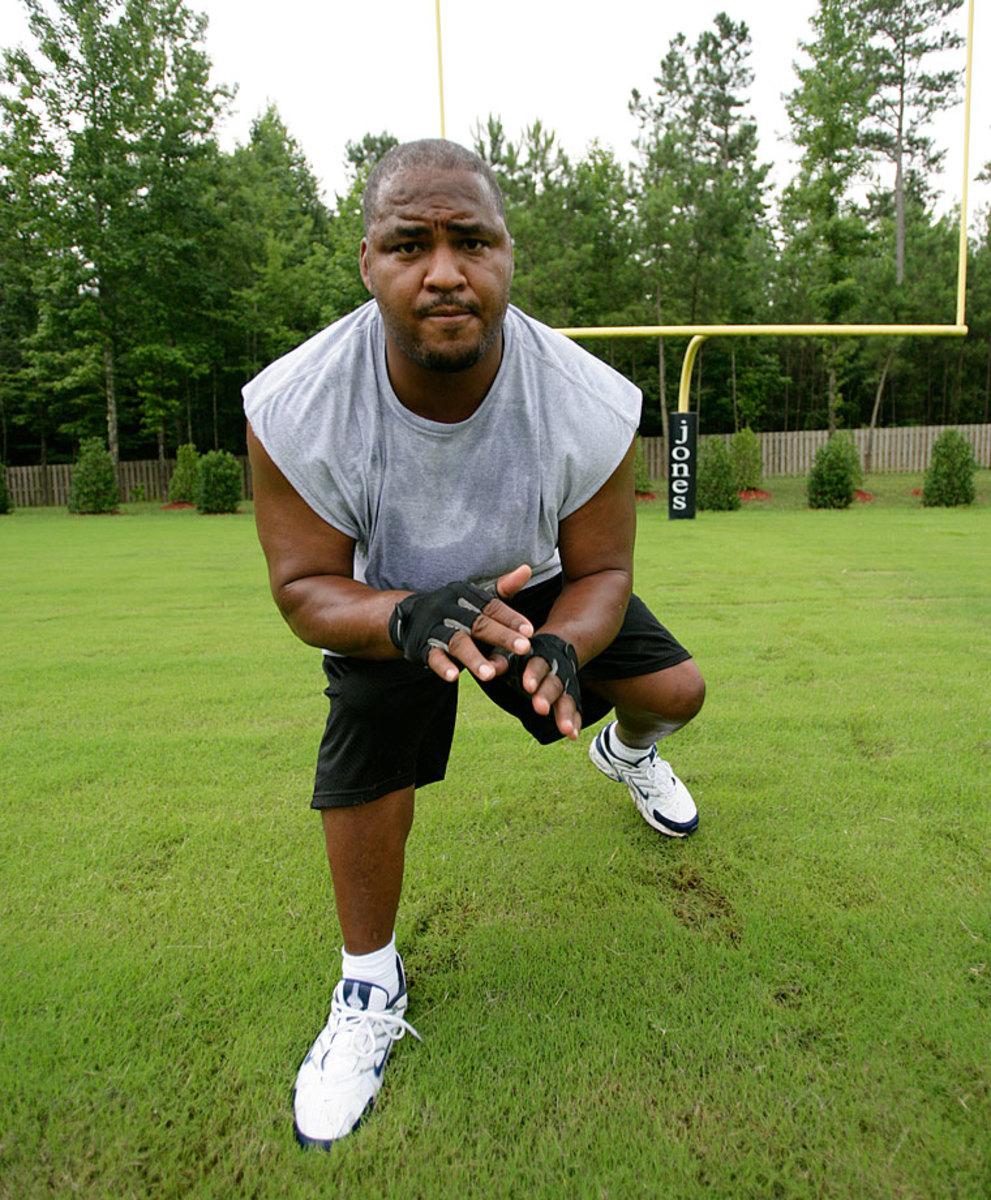
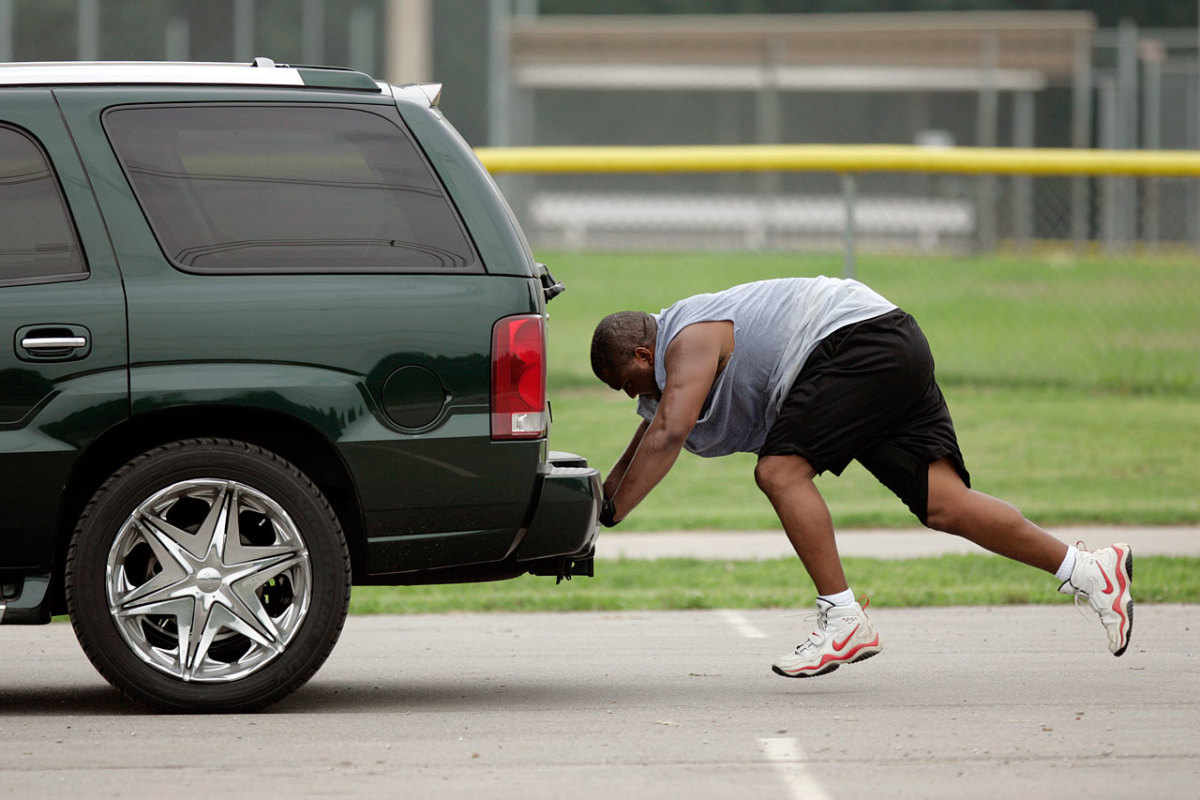
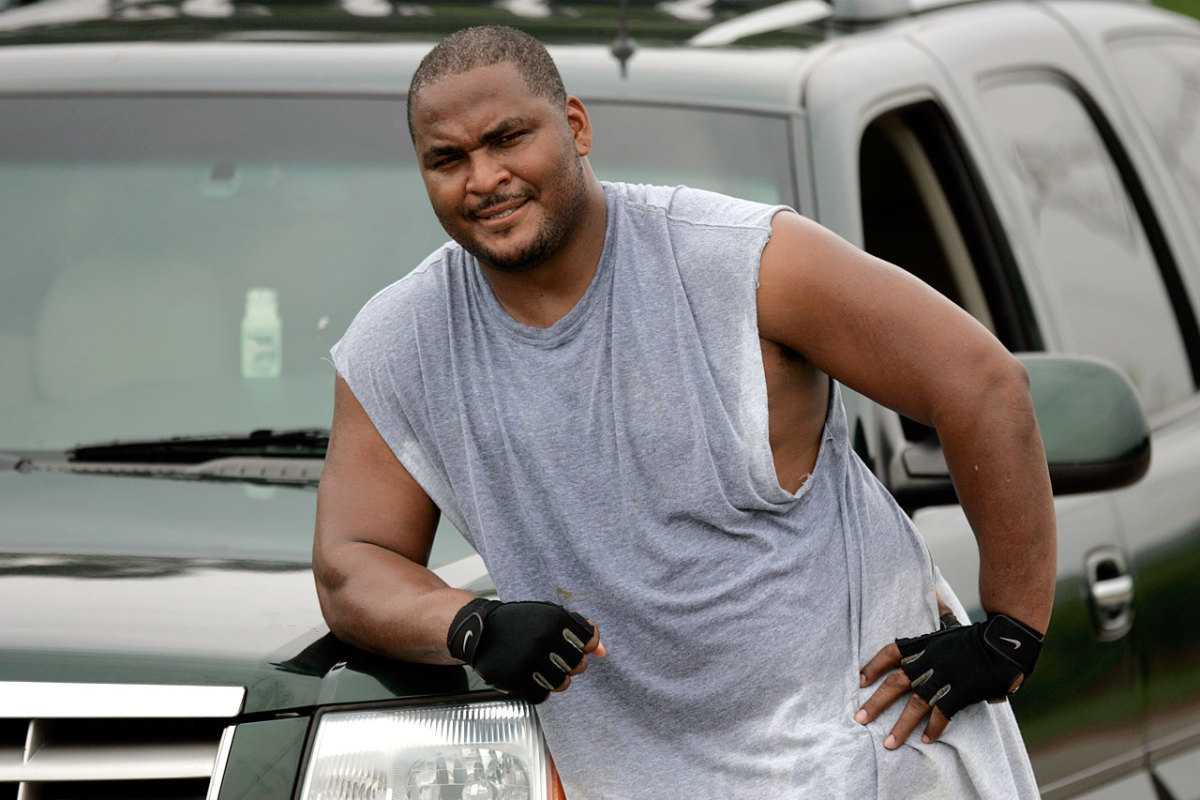
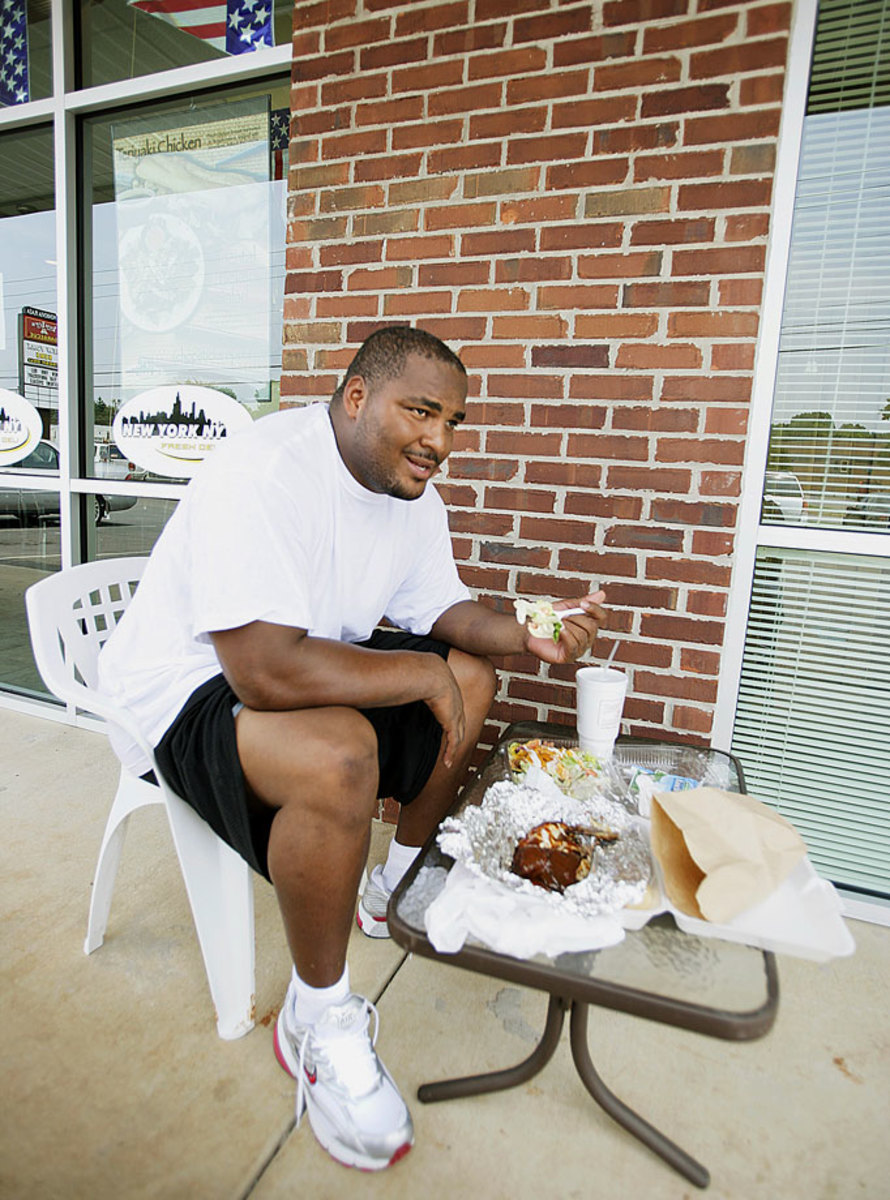
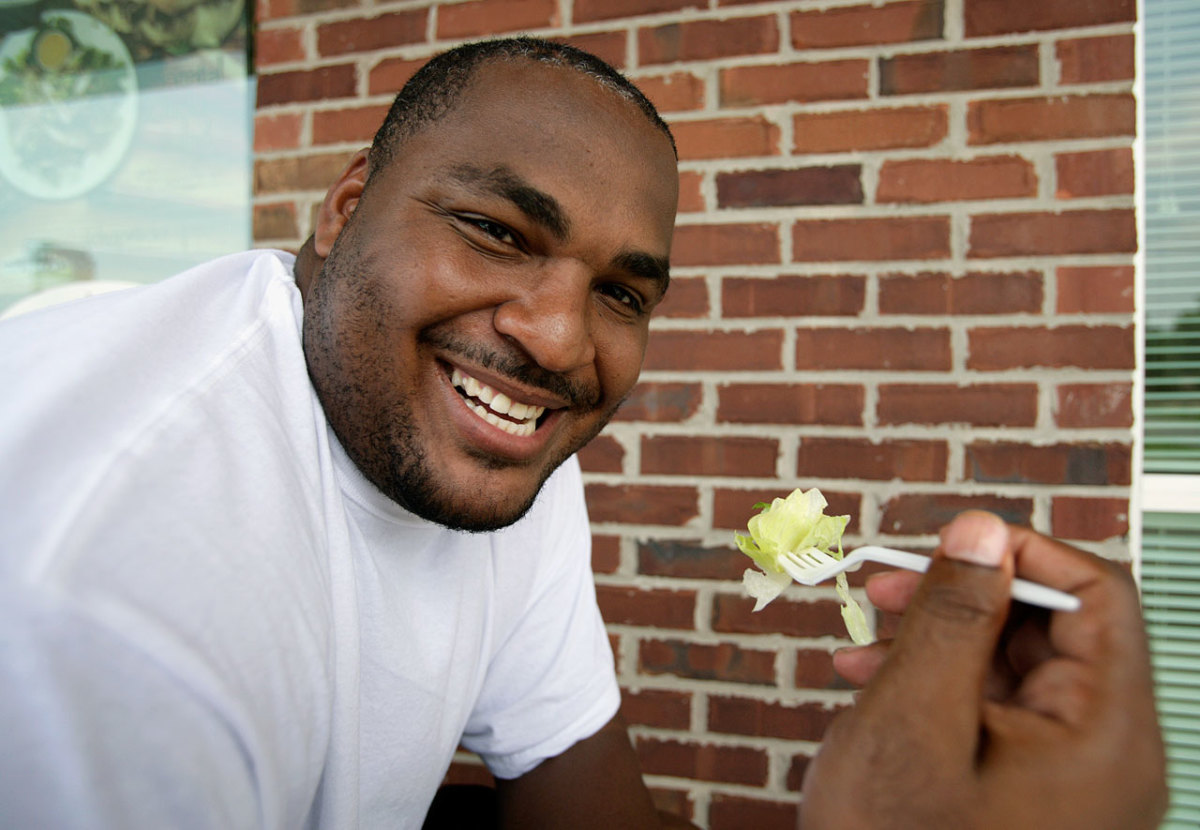
Matt Hasselbeck was the quarterback Jones most protected, the one who never worried about his blind side. Now the Indianapolis Colts’ backup, Hasselbeck still recalls the first time he met Jones. Hasselbeck had come from Green Bay, where offensive players held hands in the huddle, to Seattle, where they did not. So when Hasselbeck grabbed one of those oven mitts, Jones swatted his hand away.
Jones seemed to spend weeks in silence, but Hasselbeck came to know Jones the way those closest to him did. He was the first player on the dance floor at team parties. He moved better than some receivers. He was goofy. He gave everybody nicknames (he called me Stuart Little). He named his children Walterius and Waleria. He had, Hasselbeck says, “the best laugh-cackle for a football player of all-time -- not quite Eddie Murphy, but close.”
Jones was so good, so steady, he often skipped training camp in various contract disputes and Hasselbeck overheard coaches whisper that they preferred it that way, because his absence made certain he would not get hurt. He always showed up and started and dominated, Big Walt, at left tackle, same as always.
When Hasselbeck left Seattle, he realized how little he knew about defensive ends that lined up opposite left tackles. He never studied them with Jones there. He did meet them, though, at Pro Bowls and other player functions. Inevitably, they said that Jones was the worst offense lineman to watch film of. That was because his technique was unconventional, reliant on athleticism and feet so nimble that coaches swore that when he ran past them at full speed they could not hear his footsteps. And because he so stymied those defenders, they did not want to relive that process in the film room.
But while Jones stacked more pancakes than every breakfast restaurant that ever opened, he remained as unassuming a superstar as exists. Hasselbeck’s favorite Jones story involves the left tackle and fullback Mack Strong, who roomed together one time on the road. Strong went down to breakfast first and complained that Jones kept the room temperature at 90 degrees Fahrenheit. He didn’t dare anger the mass of All-Pro humanity that slept next to him, so Strong said nothing. But when Jones came down he also complained of the room’s temperature. Strong was a veteran, and thus Jones considered Strong’s opinion more important than his own.
During that 2005 season, I visited Jones’ hometown of Aliceville, Ala., where a billboard greeted those who drove down the sleepy highway toward the main drag. “He grew up in Aliceville,” it read, next to a picture that made Big Walt look even bigger. “And boy, did he grow up.”
I took Jones’ mother and several of his siblings to the local Waffle House. The meals added up to $38.49. I kept the receipt. There, they detailed how Jones grew up in houses without running water or toilets and apartments without telephones; how Jones always ruined one of their favorite pastimes, swinging from vines in the woods, because he broke them all; how his high school coach liked to tell Jones, “Son, you’re a millionaire walking around broke.”
Relayed all this, Jones said he planned to return home that summer and “chase some chickens,” because then they would know that Big Walt remained just Walter, that he was normal and hadn’t changed. Of course.
That was Jones, though -- consistent. “From Day 1 when I got in the league I wanted to establish the standard that I set,” Jones said on a conference call this week. “I wanted to be a guy that when you talk about offensive linemen, I wanted my name to come up.”
He did. It will. Walter Jones will go into the Hall of Fame on Saturday, and the left tackle will unleash that cackle, and the silent giant will have to give a speech. Then he will return home, to the house with the football field in the backyard.
The guess here is that chickens will be chased.
